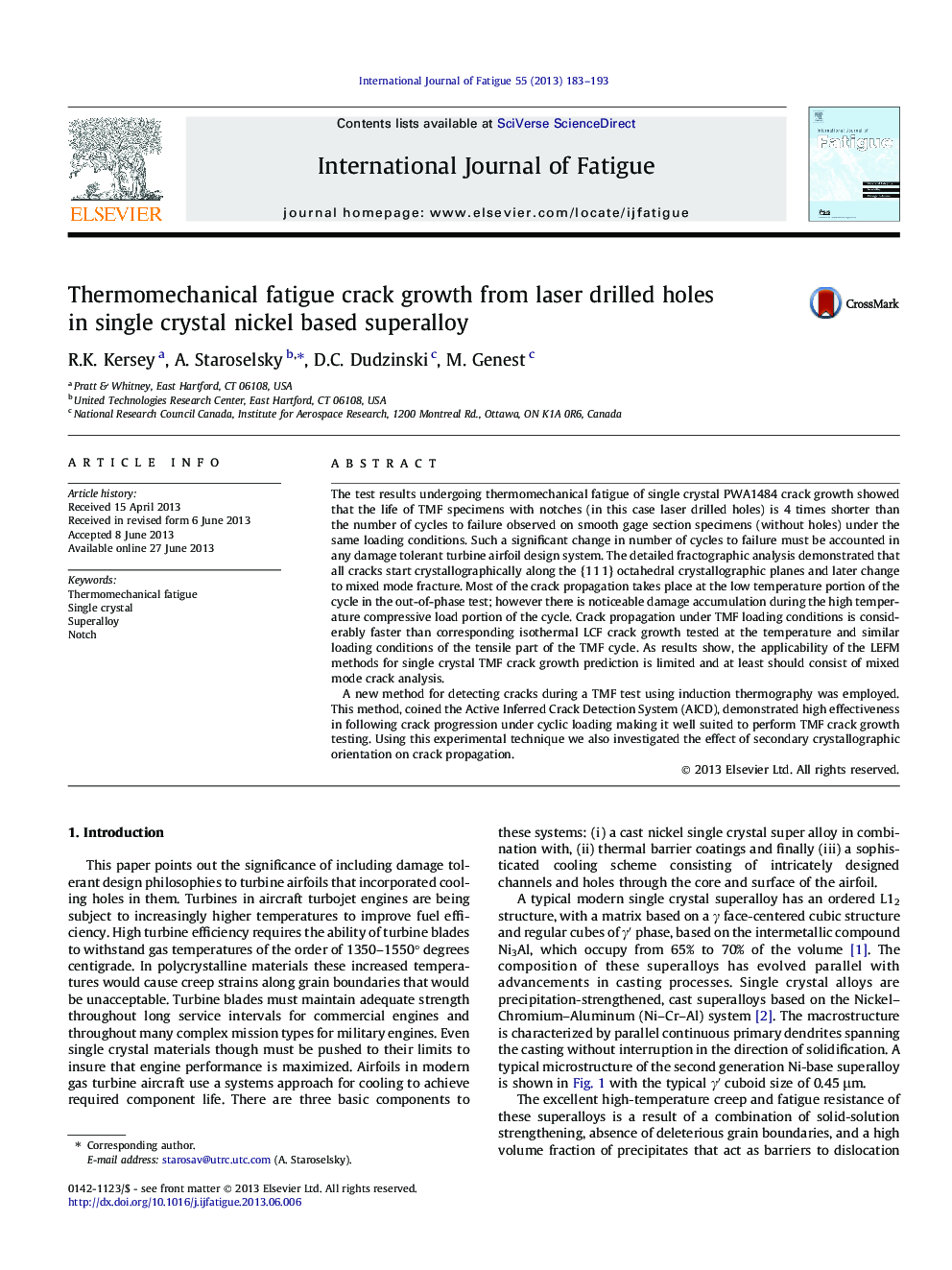| Article ID | Journal | Published Year | Pages | File Type |
|---|---|---|---|---|
| 776885 | International Journal of Fatigue | 2013 | 11 Pages |
•A new experimental methodology for TMF using induction thermography is introduced.•Holes reduce TMF life of single crystal in several times.•Detailed fractographic analysis has been performed.•TMF mechanisms are changed during cracking from crystallographic to mixed mode.•High temperature creep significantly reduces crack resistance.
The test results undergoing thermomechanical fatigue of single crystal PWA1484 crack growth showed that the life of TMF specimens with notches (in this case laser drilled holes) is 4 times shorter than the number of cycles to failure observed on smooth gage section specimens (without holes) under the same loading conditions. Such a significant change in number of cycles to failure must be accounted in any damage tolerant turbine airfoil design system. The detailed fractographic analysis demonstrated that all cracks start crystallographically along the {1 1 1} octahedral crystallographic planes and later change to mixed mode fracture. Most of the crack propagation takes place at the low temperature portion of the cycle in the out-of-phase test; however there is noticeable damage accumulation during the high temperature compressive load portion of the cycle. Crack propagation under TMF loading conditions is considerably faster than corresponding isothermal LCF crack growth tested at the temperature and similar loading conditions of the tensile part of the TMF cycle. As results show, the applicability of the LEFM methods for single crystal TMF crack growth prediction is limited and at least should consist of mixed mode crack analysis.A new method for detecting cracks during a TMF test using induction thermography was employed. This method, coined the Active Inferred Crack Detection System (AICD), demonstrated high effectiveness in following crack progression under cyclic loading making it well suited to perform TMF crack growth testing. Using this experimental technique we also investigated the effect of secondary crystallographic orientation on crack propagation.
